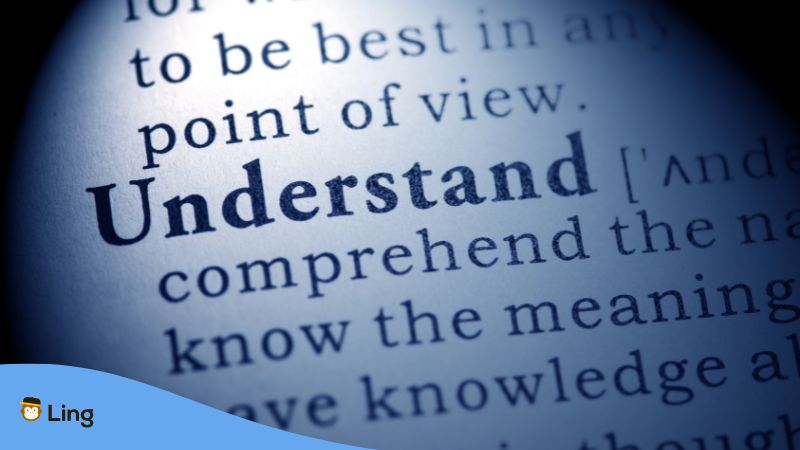Imagine speaking Punjabi fluently, only to encounter words that sound identical yet carry different meanings.
Yes, you’ve stumbled upon the intriguing realm of Punjabi homonyms! These linguistic gems can be pretty tricky, but with our help, you’ll conquer them in no time!
In this guide, we’ll explore the various homonyms in Punjabi and provide tips and examples to make your language-learning journey a breeze.
So, let’s jump right in and unravel these mysteries together!
Understanding Homonyms: Definitions And Types
Before diving into the deep end of Punjabi homonyms, let’s ensure we’re all on the same page with some basic definitions and types of homonyms.
This will lay the foundation for our exciting exploration.
Definitions Of Homonyms, Synonyms, And Antonyms
Homonyms are words that share the same pronunciation or spelling but have different meanings.
On the other hand, a synonym is a word with similar meanings, while antonyms are words with opposite meanings.
So, you must understand these terms to avoid confusion when learning about homonyms.
Homophones, Homographs, And Homonyms In The Punjabi Language
Homophones are phrases or words that sound identical but may have different spellings and meanings.
While homographs are words that are spelled the same but may have different pronunciations and meanings.
Lastly, homonyms can be both homophones and homographs, as they have the same pronunciation or spelling with different meanings.
These distinctions apply to Punjabi and other languages, although the specific words may vary between languages.
Categories Of Homonyms In Punjabi
Now that we’ve covered the basics, it’s time to dive into the three main categories of Punjabi homonyms.
Each category offers its unique challenges and quirks, so let’s get acquainted with them!
True Homonyms
First, true homonyms are words that share both spelling and pronunciation but have different meanings.
In Punjabi, these words can be especially tricky for learners, as they require a strong understanding of context to differentiate between meanings.
Homographs
Moving on, homographs in Punjabi are words that have the exact spelling but differ in pronunciation and meaning.
To master these, you should pay close attention to the pronunciation and context in which the word is used.
Homophones
Lastly, Punjabi homophones are words with identical pronunciations but different spellings and meanings.
To distinguish between a homophone, you’ll need to focus on the spelling and context in which the word is used.

Punjabi Homonyms Examples And Their English Counterparts
Now that we’ve laid the groundwork, let’s see some real-life examples of Punjabi homonyms!
To give you a well-rounded understanding, we’ll explore true homonyms, homographs, and homophones in Punjabi and provide some common English examples for comparison.
True Homonyms Examples
In Punjabi, true homonyms can be quite fascinating. Here are a couple of examples to give you an idea:
- ਬੱਤੀ (batti) – This word can mean both ‘light’ and ‘wick.’ The context in which the term is used will help you determine the correct meaning.
- ਲਾਲ (laal) – This word can mean ‘red’ and ‘ruby.’ Keep an eye on the context to figure out which meaning is intended.
- ਚੰਗਾ (changa) – This word can mean both ‘good’ and ‘healthy.’ Depending on the context, you can determine if it refers to someone’s well-being or the quality of something.
- ਬੰਦ (band) – This word can mean both ‘closed’ and ‘band’ (a group of musicians). The context in which the term is used will help you determine the correct meaning.
Homographs Examples
Homographs in Punjabi can be equally captivating. Check out these examples:
- ਤੋੜ (toṛ) – When pronounced with a soft ‘t’ sound, it means ‘to break,’ while with a hard ‘t’ sound, it implies ‘a small amount.’
- ਬੋਲ (bol) – With a soft ‘b’ sound, it means ‘speech,’ and with a hard ‘b’ sound, it means ‘a request.’
- ਲੱਖ (lakh) – When pronounced with a soft ‘l’ sound (ਲੱਖ), it means ‘hundred thousand.’ When pronounced with a hard ‘l’ sound (ਲੱਖ), it means ‘to write.’
- ਪੈਰ (pair) – With a soft ‘p’ sound (ਪੈਰ), it means ‘foot.’ With a hard ‘p’ sound (ਪੈਰ), it means ’a ladder.’
Homophones Examples
Punjabi homophones can also be a fun challenge. Here are some examples:
- ਬੱਚਾ (bacchā) and ਬਚਾ (bachā) – The first word means ‘child,’ while the second means ’to save.’ Both have the same pronunciation, but the context and spelling will help you differentiate them.
- ਮੁੱਕ (mukk) and ਮੁਕ (muk) – The first word means ‘to end,’ and the second means’ to release.’ Again, pronunciation is the same, but spelling and context will guide you to the correct meaning.
- ਕੱਚਾ (kacchā) and ਕਚਾ (kachā) – The first word means ‘raw’ or ‘unripe,’ while the second means’ unfinished.’
- ਮਿੱਠਾ (mitthā) and ਮਿੱਠਾ (mithā) – The first word means ‘sweet,’ while the second means’ dessert.’ They have the same pronunciation and spelling but are used in different contexts.
Common English Homonyms Examples
To help you relate, let’s look at a few common English homonyms. You can see the examples below and realize that it’s not so different from homonyms in Punjabi:
- Stationary vs. Stationery – ‘Stationary’ means not moving or unchanging, while ‘stationery’ refers to writing materials like paper, envelopes, and pens.
- Peace vs. Piece – ‘Peace’ refers to a state of tranquility or absence of conflict, while ‘piece’ is a portion or fragment of something.

The Importance Of Context In Understanding Punjabi Homonyms
Deciphering Punjabi homonyms can be challenging, but understanding the context’s importance can help make the process much easier.
Here, we’ll learn the role of sentence structure and subject matter and how different factors provide clues to help you better understand Punjabi homonyms.
Role Of Sentence Structure And Subject Matter In Punjabi
In Punjabi, like any other language, the sentence structure and subject matter can provide valuable clues to the intended meaning of a homonym.
For example, in the sentence, “ਮੈਂ ਗੁਰੂ ਦੇ ਪਾਸ ਜਾਣਾ ਚਾਹੁੰਦਾ ਹਾਂ।” (I want to go to the Guru), the word ‘ਗੁਰੂ’ (Guru) refers to a spiritual teacher. In contrast, in the sentence “ਮੈਂ ਕੌਮ ਦਾ ਗੁਰੂ ਹਾਂ।” (I am the leader of the community), the same word refers to a leader or guide.
Similarly, in the sentence “ਇਸ ਨੇ ਅਕਲ ਕਮਾਈ ਕੀਤੀ।” (He earned money through intelligence), the word ‘ਅਕਲ’ (intelligence) refers to the mental faculty of reasoning and problem-solving. But in the sentence “ਇਸ ਦੇ ਪਿੰਡ ਦੇ ਲੋਕ ਹਰਾਮੀ ਹਨ।” (The people of his village are mischievous), the same word refers to mischievousness or naughtiness.
How Tone, Stress, And Inflection Provide Clues
In Punjabi, tone, stress, and inflection play an essential role in distinguishing homonyms.
When two words have the exact spelling and pronunciation, the only way to differentiate between them is by examining the Punjabi tone, stress, and inflection used in the sentence.
For example, consider the word “ਸੰਨਾ” (sanna). When pronounced with a high tone and stress on the first syllable, it means ‘elder brother.’
But, when pronounced with a low tone and stress on the second syllable, it means ‘sand.’
In this case, the tone and stress provide important clues that help identify the word’s correct meaning.
Also, in the sentence “ਮੈਂਨੂੰ ਚਮਚ ਚਾਹੀਦਾ ਹੈ।” (I need a spoon), the inflection used on the word ‘ਚਮਚ’ (spoon) indicates that it is a singular object.
On the other hand, in the sentence “ਤੁਸੀਂ ਕੀ ਚਾਹੁੰਦੇ ਹੋ, ਚਮਚਾਂ ਜਾਂ ਕਾਂਟਾਂ?” (What do you prefer, spoons or forks?), the inflection used on the word ‘ਚਮਚਾਂ’ (spoons) indicates that it is a plural object.

Challenges And Solutions For Language Learners
Learning Punjabi can be fun and exciting but can also come with challenges, especially regarding homonyms.
Let’s look at some common pitfalls that language learners may encounter when dealing with Punjabi homonyms and provide strategies to help overcome them.
Common Confusion And Pitfalls
One of the most common pitfalls language learners face is confusion between homonyms with similar spelling or pronunciations.
For instance, the words ਮੋਟਰ (motor) and ਮੋਟਰਾਂ (motaraan) sound very similar but have entirely different meanings – the former refers to a machine or engine, while the latter refers to women’s underwear.
This can lead to embarrassing or awkward situations, especially when communicating with native Punjabi speakers.
Another one is since Punjabi is a language spoken in different regions of India and Pakistan, there are significant differences in how it is spoken and written in each Punjabi region.
As a result, homonym meanings in Punjabi can be different depending on the region or dialect.
For example, the Punjabi word ਗਿੱਧ (giddh) can mean ‘vulture’ in some regions and ‘kite’ in others. Similarly, the word ਸੇਵ (sev) can mean ‘garlic’ in some regions and ‘service’ in others.
Strategies For Overcoming Challenges
To overcome these challenges, there are several strategies that language learners can use to improve their overall language and writing skills:
- Develop a strong vocabulary: This includes memorizing definitions and Punjabi pronunciations and understanding the different forms and contexts in which homonyms are used.
- Familiarize yourself with common homonyms: This can be achieved through reading Punjabi literature, listening to Punjabi music, and watching Punjabi movies or TV shows.
- Practice listening and speaking: This can include engaging in conversations with native speakers, practicing pronunciation, and actively seeking opportunities to use Punjabi in everyday life.
Common Punjabi Homonyms
Now, let’s have more examples of some of the most common homonyms in Punjabi and provide you with a handy reference to help you understand the nuances of Punjabi communication.
| Punjabi Homonym | Meaning And Difference 1 | Meaning And Difference 2 |
| ਕਨਕ (kanak) | Wealth (kuh-nuhk) | Flour (kun-uk) |
| ਸਟੈਂਡ (stand) | Platform (stuhnd) | Place to park a vehicle (staa-nd) |
| ਪਰਦੇਸੀ (pardesi) | Foreigner (puh-rday-see) | Estranged (purr-day-see) |
| ਪਿੰਨਾ (pinnā) | Elder (pin-nuh) | Small (pin-nah) |
| ਹਾਥ (hāth) | Hand (haath) | Ten (haa-th) |
| ਕੁੜੀ (kurri) | Girl (kuh-rr-ee) | Wooden ladle (kur-ree) |
| ਕੰਮ (kamm) | Work (kuh-mm) | Earthenware pot (kumm) |
| ਖਰਚਾ (kharcha) | Expense (khur-cha) | Ant (khur-chaa) |
| ਨੈਚਰ (nature) | Environment (nay-chur) | Character (nay-churh) |
| ਹੱਥੋਂ (hathon) | From hands (haath-on) | From weapons (haath-oan) |
| ਸੁੱਖ (sukh) | Happiness (sukh) | Dryness (sukhh) |
| ਸ਼ਰਾਬ (sharaab) | Wine (shuh-raab) | Mirage (shar-raab) |
| ਜ਼ਿੰਦਗੀ (zindagi) | Life (zin-dug-ee) | Existence (zin-duh-gee) |
| ਸਮਝ (samajh) | Understanding (suh-mujh) | Village meeting (suh-mujha) |
| ਬਾਦਲ (baadal) | Cloud (buh-dull) | Change (baad-dull) |
With these vocabularies and some practice, you can start to master this aspect of the language.
Remember to pay attention to context, sentence structure, and pronunciation to help you identify homonyms and understand their intended meanings.
And don’t forget to have fun along the way! With some common homonyms and effective learning strategies, you’ll be well on your way to becoming a Punjabi language expert.

Learn The Punjabi Homonyms With Ling!
Ready to conquer the world of Punjabi homonyms and fast-track your journey to becoming a language pro? Download the Ling app from App Store or Google Play today!
With the Ling app, you can access a treasure trove of languages, the latest language-learning content, and engaging interactive lessons.
Explore our diverse range of fun activities designed to help you master over 60 languages and their context, sentence structure, and pronunciation.
With our app as your trusted language partner, you’ll learn effectively and have a blast!






























































